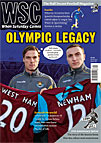 Mike Ticher describes the Australian season which saw Eastern Suburbs overcome Marconi Fairfield on goal difference
Mike Ticher describes the Australian season which saw Eastern Suburbs overcome Marconi Fairfield on goal difference
The long-term significance
As the first national competition of any winter sport in Australia, the National Soccer League (NSL) was hugely ambitious. Unlike Australian rules and rugby league, which spread gradually from their respective strongholds in Melbourne and Sydney, the NSL had to juggle a geographically balanced competition from the start. With impressive sponsorship from Philips, the project was driven by two Sydney club visionaries hoping to build on Australia’s 1974 World Cup exploits: Frank Lowy of the Jewish club Hakoah and Alex Pongrass of St George Budapest.
Among the many hurdles was interstate rivalry, which nearly scuppered the competition before it began, as the Victorian federation dragged its feet. Its strongest clubs signed up only after the NSL invited tiny Mooroolbark, from Melbourne’s outer eastern suburbs, to take part.
Much more daunting was the resistance to breaking down ethnic identities – of the 14 clubs, four were originally Greek, two Italian, one Jewish, one Hungarian, one Yugoslav (Footscray JUST) and one Dutch (Brisbane Lions). The NSL ultimately failed, succumbing in 2004 to be replaced by the A-League, but it was a stage Australian football had to go through, as the great wave of energy brought by European migrants washed away the old amateur thinking before gradually subsiding.
Story of the season
John Kosmina, briefly of Arsenal and later a Socceroos legend and A-League coach, scored the NSL’s first goal, in West Adelaide’s 3-1 win at Canberra on April 2. Western Suburbs (of Sydney) and Adelaide City were early leaders, but the title race soon boiled down to a fight between Sydney’s Eastern Suburbs (Hakoah) and Marconi Fairfield, under the World Cup coach, Rale Rasic. Easts went into the last match of the season a point ahead and four goals to the good. But they missed a penalty in a 0-0 draw with Sydney Olympic, while Marconi led Footscray 4-0, only to ship three goals in the last ten minutes.
Guest appearances from Malcolm Macdonald and Charlie George drew 15,000 to watch South Melbourne play St George, but generally crowds were modest, averaging about 4,000, and often embarrassing at Mooroolbark and Western Suburbs. That didn’t prevent a few violent outbreaks, notably in Marconi’s clash with Sydney Olympic, when players had to protect the referee from invading fans. Nevertheless, the season inspired optimism that it would prove a springboard to expansion and rising interest.
For the record books
Mooroolbark clocked up most of the unwanted milestones, including a 10-3 defeat by Adelaide City. But the Barkers staved off the ignominy of drawing the smallest crowd, leaving that to the champions, who pulled only 400 against South Melbourne.
Eastern Suburbs, better known as Sydney City in subsequent seasons, continued offering successful football to a stubbornly indifferent public until the contrast became too absurd and they left the league in 1987.
Same place today
Until a recent ownership change, Brisbane (now Queensland) Lions could claim continuity with the A-League club Queensland (now Brisbane) Roar. The Lions have since regained their old identity and play in the Brisbane leagues, but the orange shirts of the Roar still acknowledge the club’s Dutch origins, a last flickering sign of ethnic affiliation in the A-League.
Moved furthest away
Most of the former NSL heavyweights are still strong state clubs, although Hakoah and West Adelaide have fallen away. Footscray JUST are as defunct as Yugoslavia itself. The unlikely lads of Mooroolbark left the NSL after one season and now play in Victorian Provisional League One South-East, against the likes of Dandenong Sparrows and Old Camberwell Grammar.
From WSC 290 April 2011